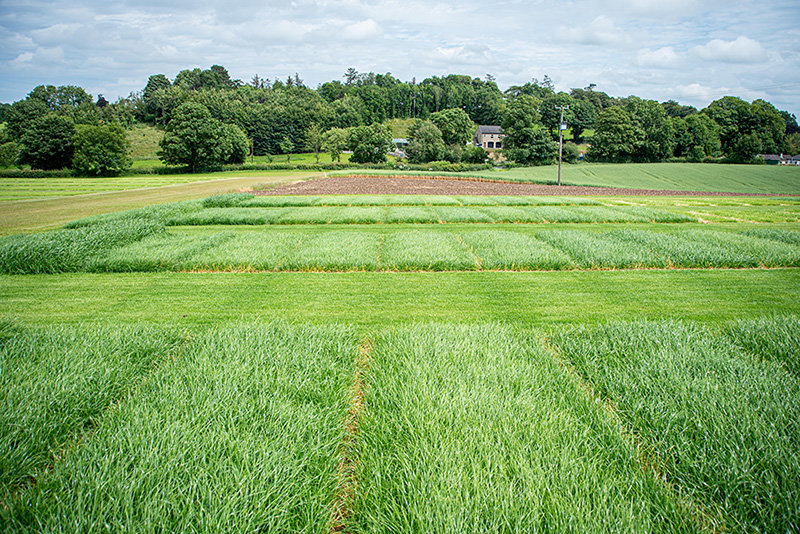Make A Plan Now
A wet autumn and winter has left soils waterlogged and put many fields under water for prolonged periods. What’s needed to get grass back into shape for the year ahead?

A wet autumn and winter has left soils waterlogged and put many fields under water for prolonged periods. What’s needed to get grass back into shape for the year ahead?
“While it may look like a disaster zone, it’s not irretrievable.”
That’s the reassuring opinion from Barenbrug’s Roger Bacon, account manager for north England and Wales. Grass is amazingly resilient, he says, but it will need some help to recover.
“Make a plan now, then be ready to use it as soon as the time’s right. You can identify the most important factors: what to consider, what assessments to make, and what actions will deliver the best results.
“Fields that were in good shape going into winter stand the best chance,” he points out, “but by using the same assessment across the farm, you can prioritise fields. What’s required to bring them back into production – and how soon.
“That’s your best route back to operational efficiency in 2024.”
Soil first
“Don’t underestimate the impact of prolonged periods of rain on soil structure,” he warns. “When a field of one hectare is underwater to a depth of just 25mm, you’re talking around 250,000 litres of water and a 250-tonne weight on the field.”
The resulting compaction will not only further impede the field’s drainage abilities, but also grass growth. Roger points to studies showing how soil compaction reduces grass growth – and yield –by between 10 and 20 per cent.
“Some of that can be attributed to poorer rooting, reducing the ability to absorb nutrients,” he explains. “Compacted soils are colder, delaying germination and root development, and nutrient cycling is reduced. That reduces grazing days, or gives a later start to cutting.”
Areas remaining wet, or with lying water, should be further examined. Roger suggests digging holes in two parts of a field – a good area as well as the suspect area – to compare the differences. “Colour, friability and root growth, and the presence or absence of worms – and even its smell – should provide an idea of the degree and depth of compaction through the soil profile.
“Now you can decide where and how to ease that compaction. A pasture-slitter or sward-lifter can provide alleviation, although the best results come from autumn operations: both methods will cause some root damage, and the last thing you want is to further impact grass growth.”
After assessing soil structure, Roger advises soil nutrient testing. “If you’ve not sampled for a couple of years, it’s important to know where you stand on macronutrients – N, P and K. Another side-effect of soil compaction is increased risk of run-off, soil erosion and nutrient loss.”
Check grass index
Flooding doesn’t just affect the soil.
“Waterlogged soils stop grass photosynthesising, arresting grass growth. What’s more, ryegrass does not enjoy having ‘wet feet’ and after prolonged waterlogging, it will die.
“Taken together, there’s a risk of affecting the sward’s ability to out-compete meadow grasses and weeds, decreasing nutritional value and overall productivity,” Roger explains.
Following recent events this is probably the biggest threat to pastures and leys, he warns.
“Unfortunately, it’s likely that for some fields, the 2023/24 winter will prove the last straw. And while a field might appear to recover – regreening once temperatures rise and soils dry out – I’d suggest assessing each field in turn, to decide its state of health and the remedies it might need.”
Barenbrug’s Grassland Index (GI, see panel) is a good place to start, he says. Using the company’s knowledge of grass breeding and good practice in grassland management, the GI provides farmers with a simple, straightforward tool to get the most from a grass or forage crop.
“Its five outcomes range from GI5, where there’s little or no room for improvement, to GI1 where reseeding is going to be the best or only option.
“By using these consistent criteria, farmers can make an overseeding or reseeding decision based on fact, rather than feeling,” Roger adds.
Reseed or not?
Roger acknowledges that reseeding won’t appeal to everyone, but where the GI is assessed as only 1 or 2, it really is the best option.
“Applying nitrogen to older pastures is a false economy; you won’t get more than 30-40% nitrogen efficiency, by feeding lower value species.
“That’s before considering the 15-17t DM you’ll get from a new ley, coupled with the increase in quality and palatability.”
Roger says interest is moving away from pure ryegrass mixes, as farmers lean into alternative species such as cocksfoot, tall fescue and timothy.
“The sense that these species are ‘old-fashioned’ is receding, partly thanks to more productive varieties, tall fescue particularly, but also because of favourable attributes such as drought tolerance and resilience under stress.”
Local advice
Where a GI assessment indicates a reseed as the best outcome, Roger suggests taking local advice. “The best fields of grass are those with a seed mixture that suits the soil, your purpose, and the local climate.
“Seek out a recommendation from your seed merchant or agronomist. For silaging, you might find they’ll advise a mixture such as Hybrid 4x4 – a highly productive ley, designed to give four cuts a year over a four-year life.
“Where you want the option to graze, then Combi is a good solution, based on a mix of two diploid and three tetraploid PRG varieties – including Tollymore, new to the Recommended List – plus clover.”
Back to basics
One further solution that Roger suggests, even for pastures scoring GI5, is a traditional and well-proven route to pasture regeneration: the power of the ‘golden hoof’.
“Beg, borrow or steal: if you can identify an opportunity to graze sheep, or even youngstock, on drying fields, it will nail it. Their grazing will reset the grass growth cycle, and as long as you’re careful about avoiding poaching – in gateways, watering and feeding areas – they’ll scavenge and serve to ‘tidy up’ the sward in readiness for the spring growth spurt.
“Failing that, dragging a harrow through those same fields will clear out the dead grass and serve some of the same purpose.”
Assessing Grassland Index (GI)
“If you’ve ever done soil sampling, you’ll be familiar with following a W-pattern through the field to provide a variety of sampling points. Do the same thing for grass.
GI5 – Index 5 Field
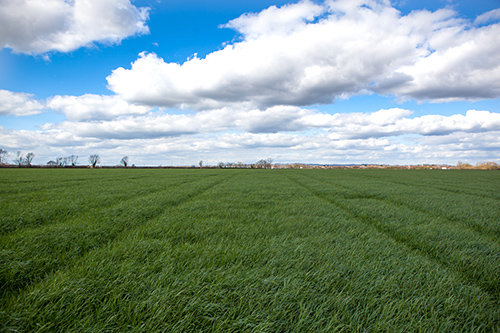
WHAT TO LOOK FOR: Field should have at least 80% of its original sown species remaining. Tight and dense sward, crowding out opportunists and weeds.
ACTION: Keeping the field in this condition: good sward management (don’t over- or under-graze), nutrient management plan, keep pH above 6 (especially if legume-rich).
GI4 - Index 4 Field
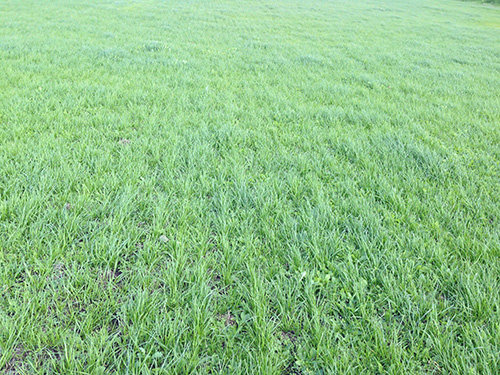
WHAT TO LOOK FOR: 60-70% of original sown species. Damage and bare patches from over-grazing or poor silaging weather. Fewer tillers, more open stand. Unproductive species creeping in.
ACTION: Use the opportunity to oversow with clover. Manage height to encourage tillering and return to a denser, tighter sward to crowd out opportunistic weeds.
GI3 - Index 3 Field
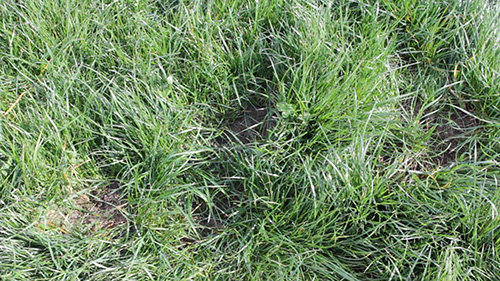
WHAT TO LOOK FOR: Presence of docks and weed grasses, 50% of sown species.
ACTION: Check compaction and soil nutrient status. Spray out weeds. Overseeding – boosting species mix, restoring balance – will remain a better bet than a full reseed. Add clover in summer.
GI2 - Index 2 Field
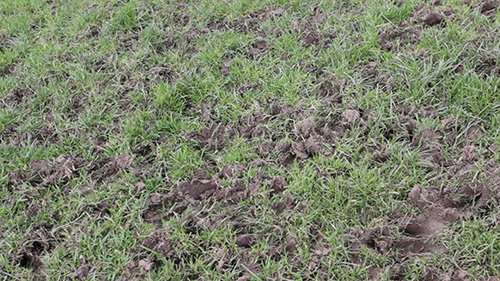
WHAT TO LOOK FOR: Sown species below 50%. Weeds and bare patches.
ACTION: Still retrievable, but soil and nutrient run-off will already be happening. Similar actions as for GI3 might buy another three years, but if this is the worst field then it’s time to consider a reseed.
GI1 - Index 1 Field
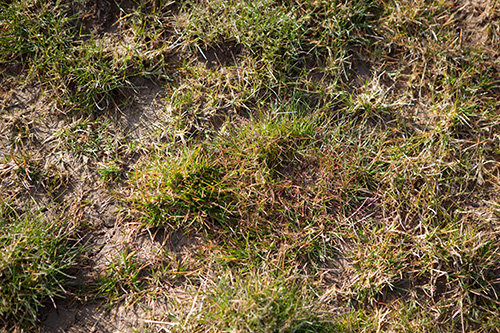
WHAT TO LOOK FOR: Open, gappy sward. Weeds and weed grasses present in large numbers.
ACTION: Reseed. Don’t be tempted to apply fertiliser: it’s a waste of time and money. If compaction’s confirmed, then consider ploughing to aerate the soil. Otherwise, go for direct drilling or no-till, to preserve soil health, organic matter and structure.
RADICAL OPTION: Seize the opportunity of a break crop, e.g. turnips. Helps with pest and weed problems; aids the breakdown of thatch. Follow with a spring reseed
